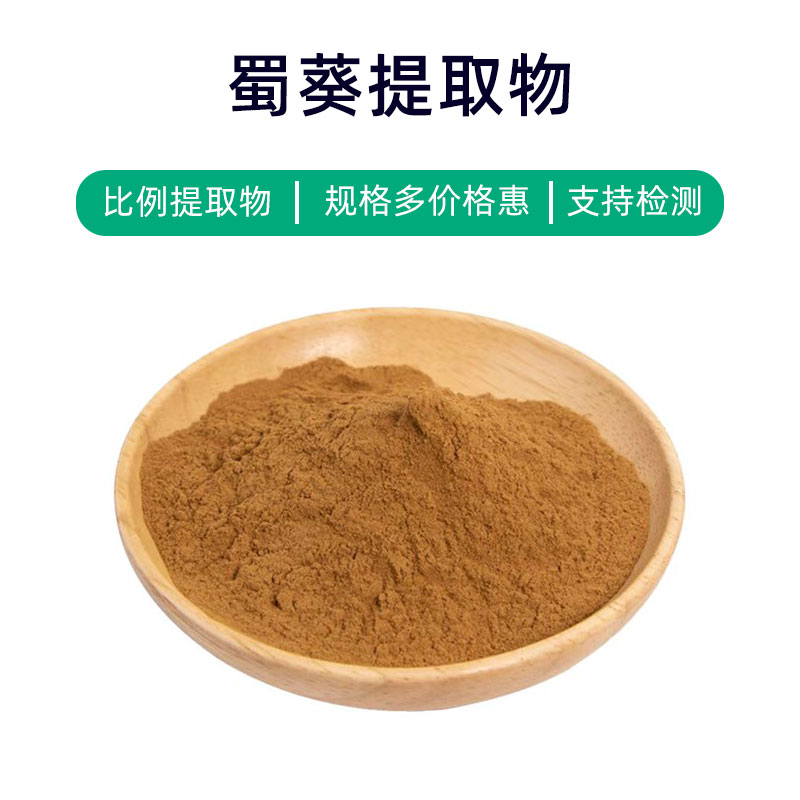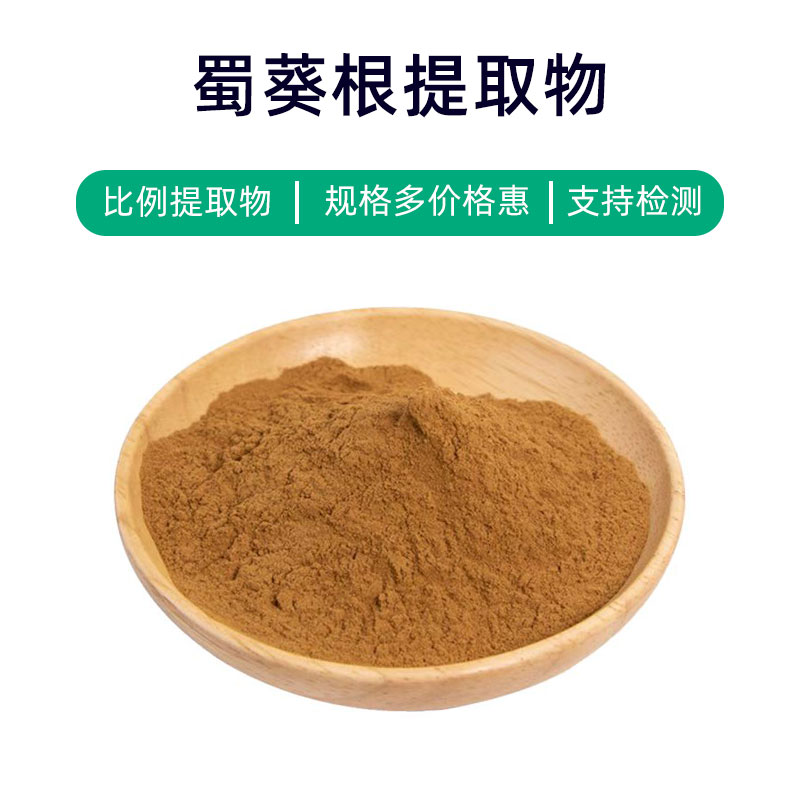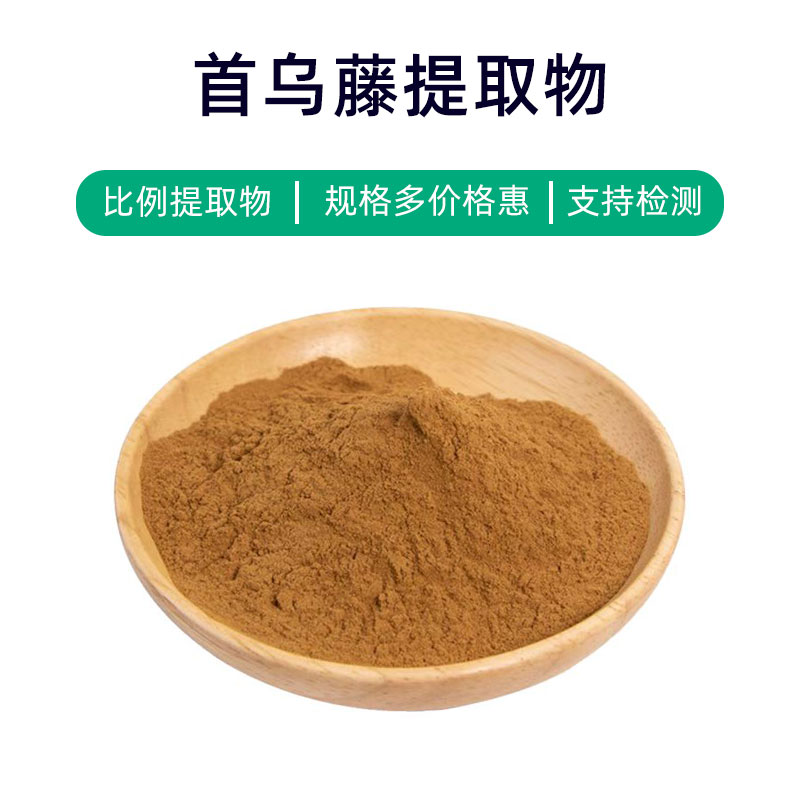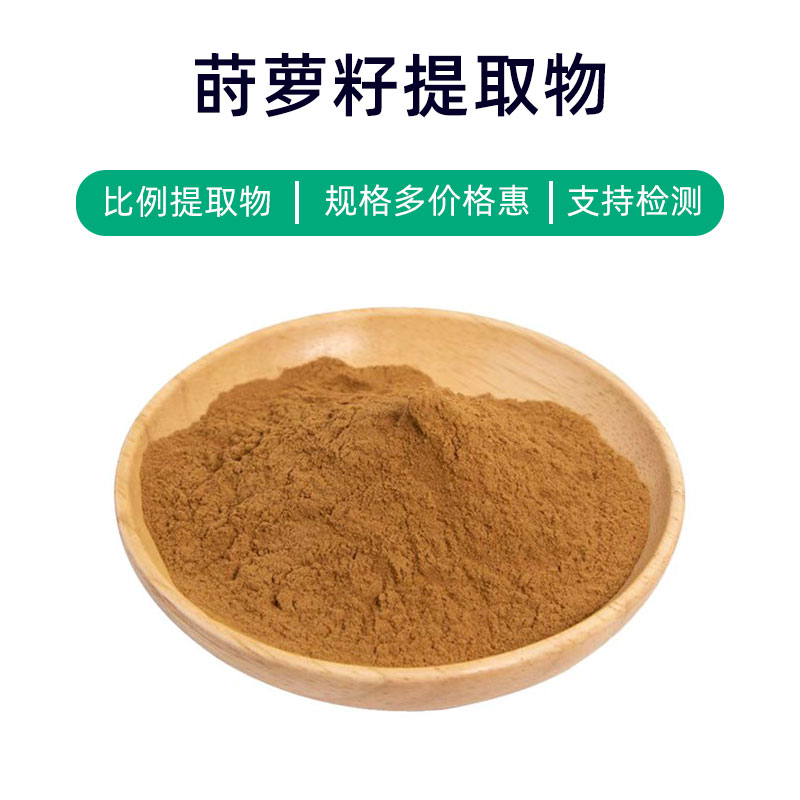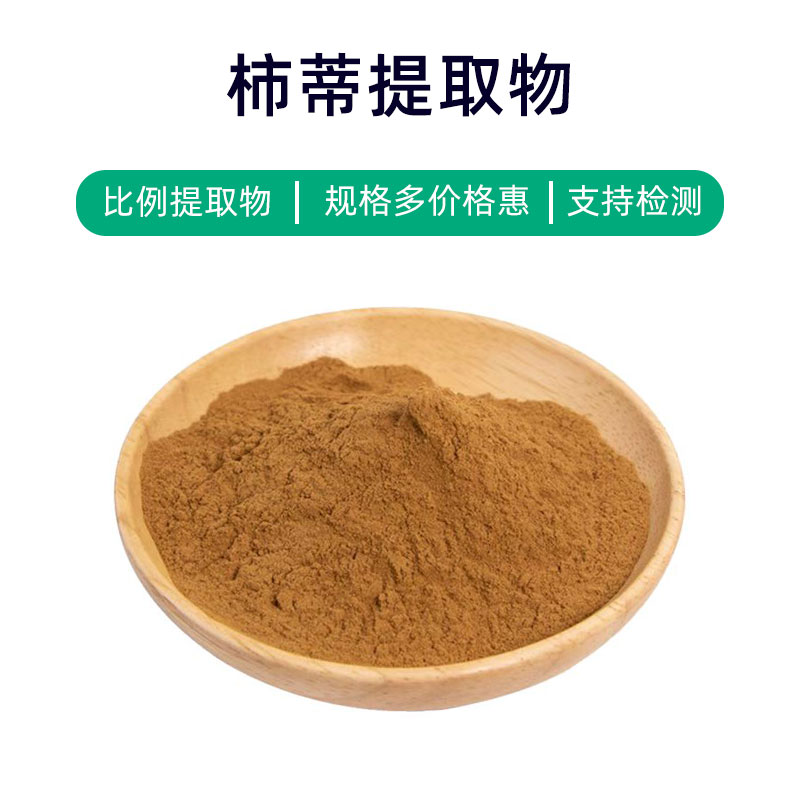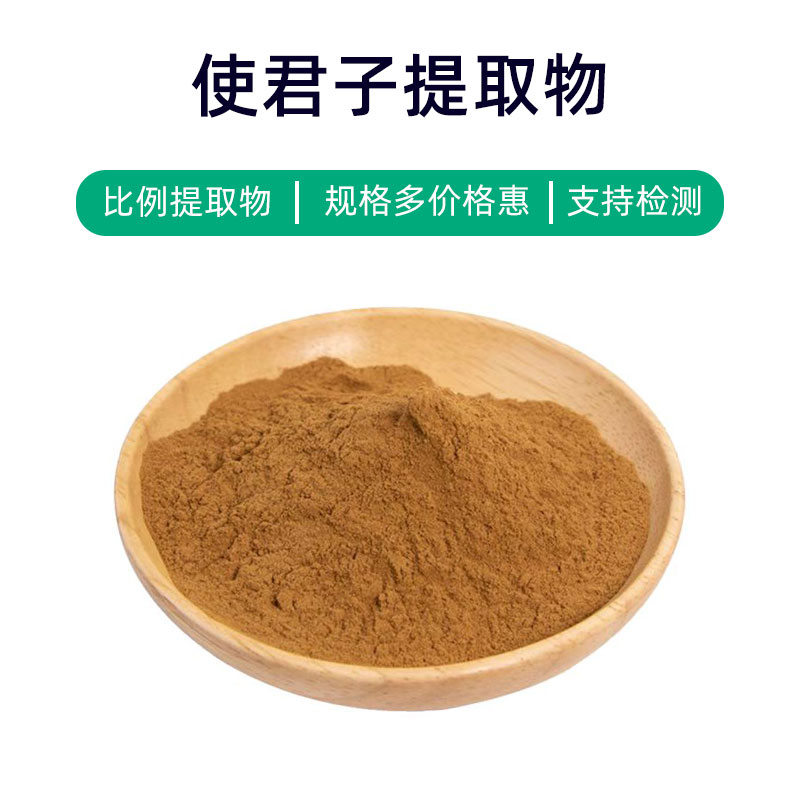Tripterygium Wilfordii Extract Product Introduction
Tripterygium wilfordii extract is a natural plant extract derived from the Tripterygium plant. Its main components include active ingredients like triptolide and tripterygium acid. These components have a wide range of applications in medicine, being used to treat conditions such as rheumatoid arthritis and autoimmune diseases, exhibiting anti-inflammatory and immune-regulating effects. Additionally, Tripterygium extract is widely utilized in the food and health product industries as a natural herbal extract to boost immunity and improve overall health. In cosmetics, Tripterygium extract is included in skincare products for its anti-inflammatory and antioxidant properties, helping to enhance skin condition and maintain skin health.
Tripterygium Wilfordii Extract Production Process
The production process for Tripterygium wilfordii extract typically includes several key steps:
- Raw Material Preparation: Select high-quality Tripterygium plants as raw material, wash and dry them to ensure quality and purity.
- Crushing: The dried Tripterygium plant is crushed to increase extraction efficiency and surface area, usually by mechanical crushing or grinding.
- Extraction: Suitable solvents (such as ethanol or ether) are used to extract the crushed Tripterygium, often employing methods like maceration, ultrasonic extraction, or pressurized extraction to obtain active components.
- Concentration: The solution obtained from extraction is concentrated, typically through evaporation or reduced pressure concentration to remove excess solvent and yield a concentrated extract.
- Solvent Recovery: The concentrated extract undergoes solvent recovery to minimize solvent waste and environmental pollution.
- Filtration and Purification: The concentrated extract is filtered and purified to remove impurities and unwanted components, resulting in pure Tripterygium extract.
- Drying and Grinding: The pure extract is dried to eliminate residual moisture and then ground into a powder form that meets specifications.
- Packaging and Storage: The extract is packaged, generally in sealed packages to avoid light exposure and moisture, preserving stability and the effectiveness of active components, and then stored in a dry, cool environment.
This outlines a general production process for Tripterygium wilfordii extract, which may be adjusted and optimized according to the manufacturer's specific procedures and equipment conditions.
Tripterygium Wilfordii Extract Effects and Side Effects
Tripterygium wilfordii extract is a commonly used traditional medicine with various effects and benefits, primarily including the following:
- Antitumor Effects: The extract is rich in effective components like triptolide that inhibit tumor cell growth and spread, widely used in cancer treatment and prevention.
- Anti-inflammatory Effects: Tripterygium extract possesses significant anti-inflammatory activity, alleviating inflammation and discomfort, and showing therapeutic effects for rheumatoid arthritis and skin inflammation.
- Antioxidant Effects: Active ingredients in the extract exhibit strong antioxidant properties, neutralizing free radicals, protecting cells from oxidative damage, delaying aging, and promoting cell regeneration and repair.
- Immune Regulation: The extract can modulate immune system functions, enhance immunity, and boost resistance, preventing the onset of infectious diseases.
- Antibacterial Effects: Tripterygium extract inhibits the growth of various bacteria and fungi, providing supportive treatment for skin infections and respiratory infections.
- Antithrombotic Effects: Active components in the extract can prevent platelet aggregation and thrombosis, improving blood circulation and preventing cardiovascular diseases.
While Tripterygium extract offers multiple benefits, it may also cause side effects such as gastrointestinal discomfort, dizziness, nausea, and skin allergies. Therefore, it is advisable to consult a doctor or pharmacist prior to use, following recommendations to avoid adverse reactions.
Overall, Tripterygium wilfordii extract is a promising natural medicinal extract with a variety of pharmacological effects, positively contributing to human health.
Tripterygium Wilfordii Extract Application Scenarios and Dosages
Tripterygium wilfordii extract is an important medicinal plant extract with wide applications in medicine, food, and cosmetics. Below are usage scenarios and dosages in different fields:
- Medical Applications:
- Antitumor Treatment: Tripterygium extract is an effective anticancer drug, often used for breast cancer, ovarian cancer, prostate cancer, etc. It is usually administered via intravenous injection, with dosage determined by the patient's condition and weight, and should be used under medical supervision.
- Anti-inflammatory and Analgesic: The extract can treat rheumatoid arthritis and related diseases. Typically, it is applied topically or taken orally, with a common dosage of 5-10 mg, taken 1-2 times a day.
- Immune Regulation: The extract aids in immune system functions, often used as an adjunct in treating immunodeficiency disorders. Dosages vary based on specific situations and should be guided by a healthcare professional.
- Food Applications:
- Food Additive: Tripterygium extract can serve as a natural food additive with preservative, antioxidant, and flavor-enhancing effects. The usage amount varies according to the type of food and safety standards.
- Gastronomic and Health Uses: It can be processed into food products, such as teas or beverages, aimed at promoting health. Typical consumption dosage is moderate, tailored to individual tastes and health conditions.
- Cosmetic Applications:
- Skincare Products: With antioxidant and anti-aging benefits, Tripterygium extract is included in skincare items like creams and serums to improve the skin's smoothness and elasticity. Dosage depends on product instructions.
- Hair Care Products: The extract is often found in shampoos and conditioners, offering scalp cleansing and hair moisturizing effects. Dosages follow product specifications.
In conclusion, Tripterygium wilfordii extract possesses significant value across medical, food, and cosmetic applications. Careful adherence to medical advice or product instructions is essential to avoid adverse reactions.
Tripterygium Wilfordii Source Plant Introduction, Distribution, and Growth Environment
Tripterygium (Taxus chinensis var. mairei) is a common species in the yew family, an evergreen conifer widely used in medicine and ornamental landscape. Here is detailed information about the source plant, distribution, and growth environment of Tripterygium extract:
- Plant Overview:
Tripterygium is a tall tree, reaching over 20 meters in height, with a dark gray bark and a conical crown. Its leaves are long, needle-like, and deep green. It is dioecious, with red spherical fruits and nut-like seeds contained within them. - Distribution:
This species primarily grows in the regions south of the Yangtze River in China, including South China, Central China, and Southwest China. It thrives in mountainous forests at elevations of 300 to 2000 meters, preferring moist, cool environments and commonly seen on slopes, valleys, and near streams. - Growth Environment:
Tripterygium flourishes in warm, humid climates and shows adaptability to various soil types but requires good drainage, favoring loose loams rich in organic matter. It typically grows in cool, damp valleys and ravines, often found in mountain forests and broadleaf woods. - Growth Characteristics:
Tripterygium grows slowly but has a long lifespan, surviving for hundreds of years. Its wood is dense and of high quality, widely used in woodworking and building materials. Due to its toxic components, the seeds and plants can also be used as poisons for fishing in certain areas. - Economic Value:
Tripterygium is an important medicinal plant, with its bark, leaves, branches, and seeds containing abundant alkaloids and flavonoids, offering antitumor, antibacterial, anti-inflammatory, and antioxidant pharmacological activities and are used to produce anticancer drugs. Additionally, Tripterygium is a valued ornamental tree often found in parks and gardens.
In summary, as a vital plant resource, Tripterygium has broad application prospects in medicine and ornamental landscaping, but there is a need for enhanced protection and rational use to ensure sustainable resource utilization.
Tripterygium Wilfordii Processing and Storage
The processing of Tripterygium wilfordii extract typically includes the following steps: First, gather plant parts like the bark, leaves, or seeds, then perform initial cleaning and processing to remove impurities. Next, employ an appropriate extraction method such as water extraction, alcohol extraction, or supercritical fluid extraction to derive effective components. Finally, through concentration and drying processes, Tripterygium extract is produced.
For storage, Tripterygium extract should be kept in a dry, cool, well-ventilated environment, protected from direct sunlight and moisture. The extract must be sealed to avoid dampness or contamination. It’s also important to keep it away from chemicals or toxic substances to maintain its quality. Proper storage conditions can extend the shelf life of Tripterygium extract, ensuring stable efficacy and quality.
Monica Sun is a seasoned expert in the plant extraction industry with over a decade of experience in research and production. She specializes in the extraction and purification of plant active ingredients, focusing on driving innovation in natural product applications. Monica has participated in the development of multiple functional plant extracts, delivering high-value natural raw material solutions for the health food, pharmaceutical, and dietary supplement sectors.









